

SALUTE
November 2023
‘SLURP’ DOCUMENTS HIS ADVENTURES AS A GREEN BERET
Clarkston man Richard
“Dick” James has written four books about his time when he served in Ethiopia and Vietnam
By Kaylee Brewster For Salute
Richard “Dick” James, of Clarkston, has lived a full life in his 81 years, and has lots of stories.
James was born in Flushing, N.Y. However, he spent much of his childhood living in foreign countries because his father worked for an airline as a station manager in places like Dublin, Ireland, and Stockholm, Sweden. With that experience, James was used to traveling and learning new languages. It made for a good fit for the special forces.
When James enlisted, he wanted to become a Green Beret because he wanted to be in the toughest service possible. He enlisted and later met a special forces recruiter who spoke about becoming a Green Beret.
“My first thought was, ‘That sounds interesting, I would love to do that,’ ” James said.
To become a Green Beret, a person has to volunteer and go through basic training, advanced individual training and jump school, because they were also paratroopers. He began his special forces training at Fort Bragg, N.C., and the process took more than a year.
Although there were physical aspects to the training, the main things they looked for was intelligence. People were picked based on a certain intelligence level, which was higher than the requirement for being an officer. The difficulty of the training came from the discipline side.
“It was more of, you better listen, you better learn and you better obey” rather than physical toughness, he said.
As James went through his training, he also chose to be an explosives expert

and became a demolition sergeant after training.
“I loved loud noises,” he said. “In fact, I used to have plastic ships that I blew up using firecrackers.”
His first deployment was in 1964 to Ethiopia in its border war with Somalia.
The Green Berets were supposed to be in Ethiopia for six months, but stayed for seven months.
There was a certain area where the Ethiopian army advised them not to go unless they were with Ethiopian troops because it was dangerous and had bandits. Everywhere they went in Ethiopia, they were armed with bullets in their magazines.
“We were told there was a price on our head that would have made it good for one of the (bandits) to kill us,” James said.
The Green Berets also got to take in the finer things of the country when they met the emperor, Haile Selassie, twice. When they first got to the country, they went to the palace and he shook everyone’s hand and talked with them, and when it was time for them to leave, they returned to the palace so he could thank them. Selassie asked that the Green Berets come to Ethiopia to teach his troops after seeing them at John F. Kennedy’s funeral, James said.
In Ethiopia, they trained three battalions in different shifts, one battalion at the time. After that, one battalion was at the border, one was in the Congo as peacekeepers and one battalion was doing the training.
When the Green Berets weren’t doing training, they had permission from the
emperor to hunt. They didn’t have much food so they would hunt impala, gazelle and guinea fowl. They also ate an elephant that had died.
“That was some ugly-tasting food,” he said.
The Green Berets were invited to several parties that would have raw beef and raw tongue hanging in a tent. The meat was also dipped in a very hot substance that gave it flavor. James said some Mexicans on their team called it the hottest they ever tasted. The officers got to eat the tongue.
“I was glad I wasn’t an officer,” James said. He learned to speak the Ethiopian language and later Vietnamese.
“We learned the language of every SLURP continued on page 3
JORDAN OPP/FOR SALUTE
Green Beret veteran Dick James smiles as he speaks about his time serving in Vietnam in his Clarkston Heights home earlier this month.

SLURP
continued from page 2
country we went to,” James said.
He can recall a little bit of the languages now. But he once gave some Ethiopians a surprise when he spoke to them in their language. James was at the Texas State Fair and he saw some Ethiopian soldiers there. So James called to them, saying “hello sirs,” in their language.
“They were just like ‘What?’” he said, laughing.
After Ethiopia, James returned to the U.S. and took more training and courses and traveled around the country. He then volunteered to go to Vietnam.
“The reason I volunteered for Vietnam was because one of my friends who I had gone through training with had been executed by the Viet Cong in Vietnam after he had been captured alive,” he said. “I heard about that and that’s what made me volunteer to go.”
He left for Vietnam in February 1966 and returned in September 1967.
The first camp he was stationed at was Cai Cai, right on the border of Cambodia, with 12 other Americans. A thousand yards away, there was a Cambodian outpost, and once a week the Green Berets would be hit with artillery around the camp “to show us they knew how to get us,” James said.
Because the group was small, James said they operated like family and called each other by their
names. Even though they were close to the enemy, James said he didn’t feel scared because he trusted the men he was with.
“You didn’t have to watch your own back, you knew that you were covered,” James said.
Once he went on a patrol with another American and an interpreter. Near the outpost at the border, the other American he was with left to go on reconnaissance. Right after he left, they were shot at with artillery rounds and machine gun fire.
“I remember one bullet going right between my legs,” James said. “I could see it going through the dirt. It was a scary process.”
The Vietnamese interpreter ran away, leaving James by himself. James wanted to make sure the other man was OK, so he stayed until they found each other. Then they headed back to the camp.
James was the radio operator and was carrying the radio, “which I always considered to be a great aiming stake with the antenna,” he said. “They’d say, ‘Aim for that, that’s the guy that calls the plane in.’”
Then James heard on the radio that the commanding officer had been killed back at the camp. The officer was in the observation tower telling people where the rounds were landing and the tower took a direct hit.
That day, James said, was the worst time he had.
SLURP continued on page 31




JORDAN OPP/FOR SALUTE
Green Beret veteran Dick James poses for a photo outside his Clarkston Heights home on Nov. 2.
All of us at Culligan Water Moscow


Culligan Water LLC
320 North Jackson St. Moscow, ID 83843 208-882-1351 www.culliganwaterllc.com
The History of Veterans Day
Veterans Day, formerly known as Armistice Day, was originally set as a U.S. legal holiday to honor the end of World War I, which officially took place on November 11, 1918. In legislation that was passed in 1938, November 11 was “dedicated to the cause of world peace and to be hereafter celebrated and known as ‘Armistice Day.’” As such, this new legal holiday honored World War I veterans.

In 1954, after having been through both World War II and the Korean War, the 83rd U.S. Congress -- at the urging of the veterans service organizations -- amended the Act of 1938 by striking out the word “Armistice” and inserting the word “Veterans.” With the approval of this legislation on June 1, 1954, Nov. 11 became a day to honor American veterans of all wars.

COMMEMORATING THE 30TH ANNIVERSARY OF THE VIETNAM WOMEN'S MEMORIAL
Courtesy DOD News
Anyone who’s ever scanned the list of 58,318 names etched into the Vietnam Veteran’s Memorial in Washington, D.C., may have noticed a few that were different from the rest – particularly, the eight names that belong to women.
While women weren’t allowed to serve in combat back then, plenty volunteered for other roles that still saw them deployed to Vietnam and put in harm’s way.
As the nation recognizes all who have served this Veterans Day, a special spotlight will be on these women because Nov. 11 also commemorates the 30th anniversary of the Vietnam Women’s Memorial. Standing about 300 feet behind the apex of the Wall, the memorial was the first in the nation’s capital to exclusively recognize the patriotic service of women, both military and civilian.
It took a long time to be realized, though. In fact, the idea for it didn’t even begin to take shape until the Vietnam Veterans Memorial was dedicated in 1982. Diane Carlson Evans, who eventually founded the women’s memorial, made sure she was at that unveiling.
“I had to be at the dedication. I had to find names,” Evans said.
The Vietnam Women’s Memorial statue, which depicts all of the women who served during the Vietman era, stands near the main Vietnam Veterans Memorial in Washington, D.C.
Kermit Malcom says goodbye to one of his daughters, 1945.
ARMY BUGLER SOUNDS TAPS FOR ALMOST TWO DECADES
Courtesy DOD News
During wreath laying ceremonies at Arlington National Cemetery's Tomb of the Unknown Soldier, Master Sgt. Matthew Byrne marches out to the Tomb, brings his bugle to his lips and slowly sounds out the 24 notes of the bugle call, "taps." When finished, he tucks the bugle under his arm, salutes and marches away.
As one of the Army Band's trumpeters, Byrne plays the bugle at events around the cemetery and Military District of Washington events in the nation's capital and throughout the country. He has sounded taps at funeral services for dignitaries such as Gen. Colin Powell and Sen. Bob Dole, as well as ceremonial wreath layings by various world leaders.
Byrne, from Long Island, New York, began playing the trumpet in elementary school after hearing the theme to the movie "Rocky," called "Gonna Fly Now." After graduating from Ithaca College, he spent six years teaching music at
elementary and middle schools in New York and Connecticut before returning to the University of Louisville to pursue a master's degree in trumpeter performance.
In 2004, at the age of 29, Byrne learned of an opening for a ceremonial trumpeter in the Army Band, known as “Pershing’s Own.” He auditioned for the job and got it. After completing basic training at Fort Sill, Oklahoma, he joined the band at Fort Myer, Virginia.
Even though Byrne has sounded, “taps,” thousands of times, he still strives to meet the Army Band’s high standards. “There are times that a note got chipped or “taps” was not up to my standards,” he said. “In Pershing’s Own, it’s done right.” Having sounded “taps” at funerals around the country, he knows that ANC is different. “Few places match the level of professionalism at Arlington,” he explained. “The amount of dedication to detail here is something special.”
Byrne has played “taps” in

temperatures as low as 8 degrees and as high as 104 degrees, in all kinds of weather. The hottest was a change of command ceremony at Fort Belvoir, Virginia, where he had to stand on an
unshaded field. “It was like standing in a convection oven that was blowing hot air
BUGLER continued on page 28

Regency Pullman salutes our military service residents past and present and the families who support them!








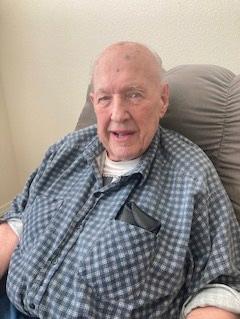






ELIZABETH FRASER, ARLINGTON NATIONAL CEMETERY
A bugler from the Army Band, "Pershing's Own", plays “Taps” during a Presidential Armed Forces full honors wreath-laying ceremony at the Tomb of the Unknown Soldier at Arlington National Cemetery.
Neil Meyer Army
Paul Hurlbut Army 1954-1957
Jack Ambrose Navy WWII
Max Patterson US Navy 1942-1945
Willis Worthy Bill Paul Navy Sea Bee’s
Mike Werner Army 1968-1970
Kenneth Ailor Navy 1950-1954
William “Frank” Muller Navy 1952-1955
Gerald Willett Air Force & Air National Guard 1950-1954
Gene Wood National Guard
Robert Grenz US Air Force 1955-1959
Jim Broyles US Air Force
Leland Carrick Army


MARINE PROPELS CAREER TO NEW HEIGHTS
Courtesy DOD News
The Marine Corps is renowned for its ability to transform civilians into warriors. There is often something inherently unique about those who willingly accept the challenge of becoming a Marine—something inside them that thirsts for more, which is embodied by Marine Corps 2nd Lt. Robert Kiffs.
for the all-state band and to secure a music scholarship at the University of Nevada, Reno. His dedication paid off with a music scholarship covering half of his college tuition, supplemented by the state of Nevada for his academic achievements.


Kiffs was born in 2001 in Accra, Ghana. Like most children, his early childhood revolved around education and family. His mother worked two jobs throughout his life to ensure her sons had everything they needed and instilled the value of hard work. Kiffs was nine-years-old when he received the life-changing news that he and his family would move to America. His mother told him they were moving to America for his and his brother’s opportunity to be successful. Settling close to the Las Vegas strip with his mother and brother, Kiffs adjusted to what was a stark difference to the life he knew in rural Ghana.
Kiffs faced academic challenges in elementary school due to language and cultural differences. In Ghana, his primary language was Ewe. He dedicated extra hours to after-school English classes, helping him catch up to his peers, showing perseverance and a commitment to education. During middle school, Kiffs found interest in the clarinet. Unbeknownst to him then, the clarinet would become a cornerstone of his life, transforming its trajectory in unpredictable ways.
MUSICAL PROMISE
Kiffs attended Rancho High School in Las Vegas. High school served as a formative period for Kiffs’ character development. He dedicated countless hours honing his craft as a clarinetist. Driven by betterment, Kiffs saw the fruits of his efforts as he elevated his standing in his high school’s band. Kiffs would ultimately make his high school’s top band, cementing his position among the school’s top musicians. Kiffs also made the all-county band, furthering his status as a musician. Kiffs set a goal to audition
Kiffs attended the University of Nevada, Reno, continuing his musical career and, like most college students, contemplating his next steps in life. A hiking trip with high school friends during his sophomore year of college sparked Kiffs’ contemplation of the military as a potential path. A friend’s interest in the U.S. Air Force reminded him of Gunnery Sgt. Izhar Weaver, a Marine Corps recruiter he met during his freshman year. Following the conversation about military service from the hike, Kiffs contacted Weaver to initiate the enlistment process. Reflecting on his mother reminding him why they came to America, he ultimately decided to join the Marine Corps to make his mother proud.
“I wanted to kick start my career, “ Kiffs said. “My mom had a stroke during COVID. I wondered, would she ever see me as a fullgrown adult with a career? I thought the Marine Corps would be a means to make her proud.”
Kiffs wanted to align his musical talents to his Marine Corps career by earning a contract as a Marine Corps musician. First, Kiffs had to conduct a live audition to evaluate his musical acumen to secure the music contract. He succeeded in his audition and was accepted for a music contract having met all the standards for enlistment into the Marine Corps. However, his excitement was short-lived when he discovered he could only hold his contract in the Delayed Entry Program for a year, which was sooner than his projected college graduation timeline. Unwilling to put completing his degree on pause, Kiffs doubled his course load and attended summer classes to accelerate his degree. Kiffs completed his degree in 2 1/2 years, a year earlier than usual.
ARMY DOCTOR HELPS SAVE CHILD ON PLANE

ACourtesy DOD News
Brooke Army Medical Center physician put his skills to the test on a flight back to San Antonio when a child on the plane became unresponsive.
Army Capt. (Dr.) Ronak Patel, neurologist, was returning home with his wife and baby, after visiting family in Maryland when an urgent call asking for a physician came over the intercom.
“I didn’t hear the announcement because I had my noise-cancelling headphones on, but my wife heard it and tapped me on the shoulder,” Patel said.
The flight attendant came and said they already had someone to assist but a short time later she returned to ask Patel for his help.
“The other person who volunteered was a retired Air Force physician assistant who hadn’t practiced for more than 20 years,” the doctor said. “So, we worked together. He helped with finding the medical equipment
that was available on the plane.”
The parents said the 4-year-old, who had a genetic disorder and several other medical issues, wasn’t responding when they tried to wake her. They checked her oxygen level, and it was only at about 40%. Her normal oxygen level is 90% or above.
“She was breathing very shallow, rapid breathes,” Patel said. “She had a tracheostomy tube from past surgeries, but the parents said she wasn’t currently oxygen dependent.”
They tried giving her oxygen and it helped a little, but not as much as they hoped it would.
“When we opened her trach, she gave a little cough and we could hear her congestion,” he said.
The parents told Patel that she had been sick a couple of days earlier and that she was on antibiotics.
“I asked if they had some type of suction device on the plane, but the parents said they had one and a nebulizer in their bags,” Patel said. “We were able to suck some mucus out
through the trach tube and give her a nebulizer treatment. Then her oxygen level started to go up, but as soon as we would take the oxygen mask off it would start to drop again.”
Even though her oxygen level was back in the 90s, she still wasn’t waking up, so they collectively made the decision to divert the plane to Houston so the child could get additional medical treatment.
“As we made that decision, she slowly started wiggling around so I asked her mother to call her name and stimulate her by tapping her a little,” he said. “Then she did open her eyes and give a good cough. We tried to keep her awake until the plane landed, but she was in and out.”
As soon as the plane landed Emergency Medical Services came and took the child off the plane, so Patel doesn’t know the outcome.
“Am just happy I was there and able to assist,” he said. “I hope that she was able to get the additional care she needed to recover.”

THOSE WHO SERVE
COURTESY DOD NEWS
Army Capt. (Dr.) Ronak Patel, a neurologist at Brooke Army Medical Center, who was returning home with his family, helped to save a child who became unresponsive on the plane.


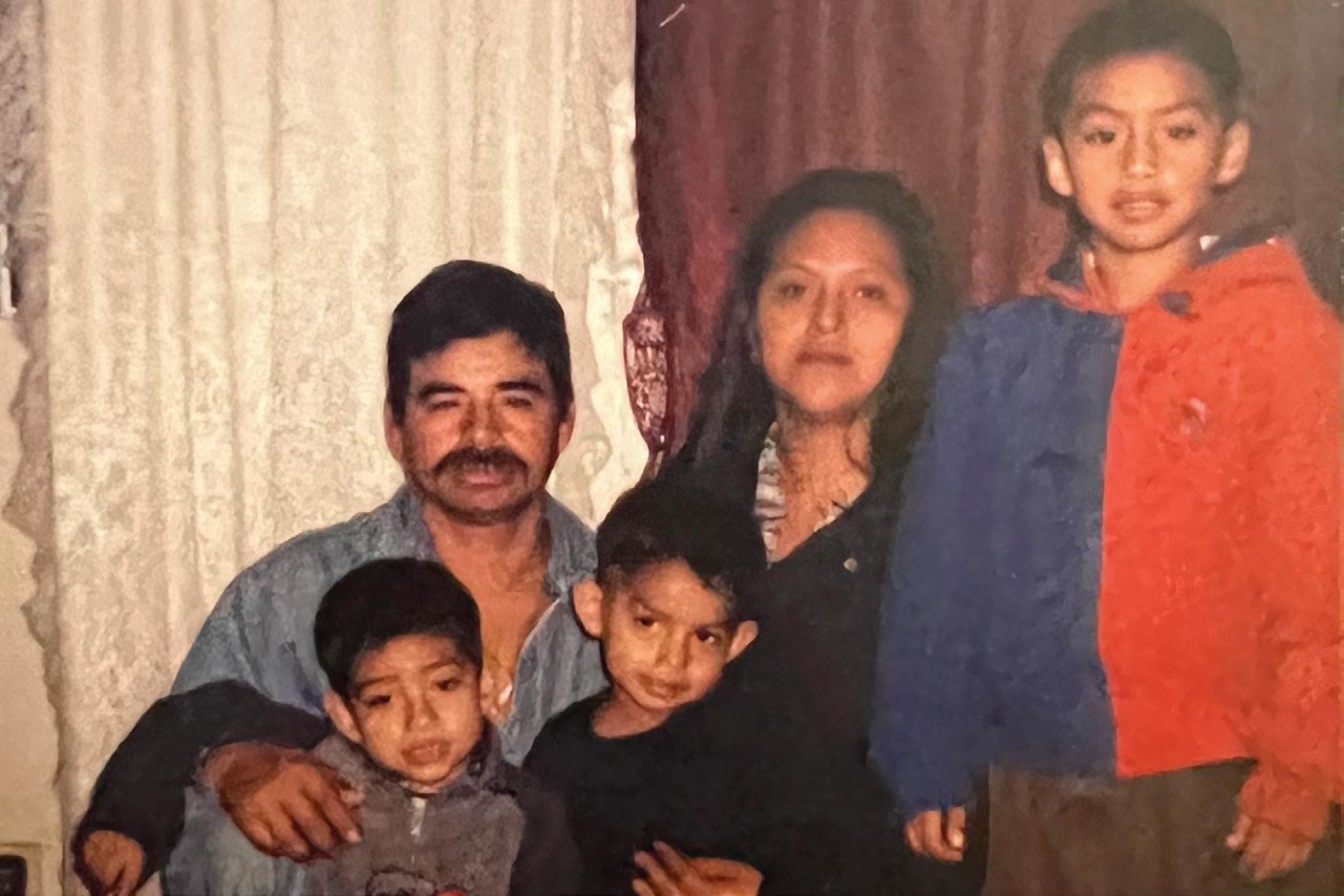






















SOLDIER USES FATHER'S LIFE LESSONS AS GUIDE TO SUCCESS
Courtesy DOD News
Afather can be the most important influence in a boy's life. He is the first example of what it means to be a man, and the lessons he passes on can stick with his son for life.
The lessons Army Spc. Armando Estrada learned from his father, Armando Estrada Sr., helped shape the man he grew up to be and prepared him for his future profession: a soldier in the United States Army.
"I didn't need to be taught how to take care of fellow soldiers because my dad taught me how to treat others," said Estrada, a utilities equipment repairer with Headquarters Support Company, Headquarters and Headquarters Battalion at U.S. Army South. "He taught me that there is always a way to help people."
GIVING MORE THAN HE TOOK
Estrada Sr. was an immigrant from Mexico and a hardworking, single father of three boys. He taught them to never
give up because you never know just how much you can change someone's life. His teachings centered around respect and helping others who are less fortunate. That assistance doesn’t always hold monetary value, sometimes it comes in the value of a helping hand, Estrada said.
“My father gave more than he took. He didn’t have much, but he always gave what he could,” Estrada explained. “If he didn’t have money or food to give away, he provided his labor.”
A SECOND FAMILY
After joining the Army, Estrada said he quickly realized many of the values he learned growing up in a Mexican American household were the same values expected of soldiers, such as working as a team, doing your fair share of work, and having each other’s backs.
“I’ve been taught by my father that if something needs to be done, do it because it’s the right thing to do,” Estrada said.
COURTESY DOD NEWS
Army Spc. Armando Estrada
COURTESY ESTRADA FAMILY
Young Armando Estrada posing for a photo with his family. Now, Estrada is a utilities equipment repairer with Headquarters Support Company, Headquarters and Headquarters Battalion at U.S. Army South.
GERMAN-SPEAKING AIRMAN AIDS IN RECOVERY OF WWII BOMBER CREW
ACourtesy DOD News
ir Force Master Sgt. Brian Character, 39, is a member of a 25-person team from the Defense POW/MIA Accounting Agency that's searching for a B24H Liberator bomber that crashed in a field in northern Germany in 1945.
Besides helping the team retrieve the remains of the 10-airman crew and identify their personal effects, Character's other important job is translator for the team.
Character grew up in Wurzburg, German. His dad was a soldier, stationed at nearby Leighton Barracks. Character's mom is German.
"Fortunately, my mom taught me to speak fluent German," he said, adding that his wife is also German and is teaching the language to their three children.
Character said he wanted to join the military like his dad, but his father steered him to the Air Force.
The year 2008 is significant for Character because that's the year he enlisted in the Air Force, and that's also the same year that Leighton Barracks was turned over to German authorities.
This isn't Character's first recovery and translation mission for the agency. He also was in another part of Germany, Austria and northern Italy.
Speaking German was useful in Italy because over 62% of Italians use it as their first language in the autonomous province of Bolzano in northern Italy, he said.
Character has translated for the team on numerous occasions, speaking to the local town mayor, police, landowner and even residents who witnessed the crash when they were children.
“Germans are friendly people, but when you speak German, they’re a little more open,” he said.
Another useful skill is helping the team navigate the menu when they’re dining out in town.
When Character isn’t on a recovery mission, he’s a military training leader at the Defense Language Institute Foreign Language Center in Monterey, California, where his family is now staying.
He’s also trained as an aircraft maintainer, a job that involves performing flight safety and function checks.
After he retires from the Air Force, Character said he plans to finish his degree in Occupational Safety and Health, a job he said relates to things that aircraft maintainers do.
“Working on recovery missions is an honorable thing to do. It’s amazing that almost 80 years after the war that we still go out and look for remains of missing service members,” he said.
The agency, which is part of the Defense Department, searches in 45 countries for missing service members from World War II and later conflicts, including the Korean War, Vietnam War and Desert Storm. Some 81,000 are still missing.
Once remains are recovered and the agency’s laboratory determines the person’s identity through DNA analysis and other means, that person’s family is notified, and arrangements are made for a military funeral.

No Greater

Happy Veteran’s Day to past, present and fallen soldiers. We honor you for defending o u r count r y and o u r freed o m . 208 . 7 98 . 8 500

DAVID VERGUN/DOD

2023 Salute A VETERAN


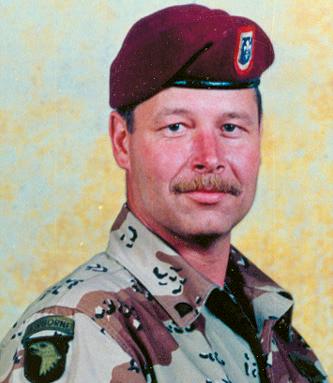














Nels Anderson PFC - WWII 1944-1946 Infantry Light Machine Gunner and Scout, Italy Alan T. Anderson
Haleakala, Vietnam
Loren (Ben) Tannahill Sergeant - Marines 3/29/1941—12/21/1945 Central Pacific Campaign; WWII, Iwo Jima
Asa V. “Ace” Clark Jr. Captain AAC 1941-1945
B26, Martin MarauderMedium Bomber- 70 missions
Dr. A.J. Michaelis Captain - Airforce 1941-1945 Roswell, New Mexico
Robert Gecich Sgt. - Army 1950 - 1952 Combat Infantry Korea
Robert Dean PFC - Army-Marines
years of service Korea- 2 Jumps Behind Enemy Lines
Ernie (Ernest) L. Chamberlin Staff Sergeant - Army 4 years Of Service Philippines, New Guinea & Occupation of Japan
Robert Barrentine
- Air Force
Recon Wing 1964 - 1968 Denver; Tampa; Vietnam; Wichita
Lawrence W Bunch E4 Petty Officer - Navy 4 Years of service Vietnam; Tacoma, WA
2023 Salute A VETERAN
















Williams
Clint Engledow, Jr.
1st Class
Clint Engledow III
Clint Engledow, Sr. Staff Sergeant - Army Air borne 1943-1945 Europe WWII
Philip S. Zaversnik Electrician Mate DM3C – Navy 1941-1943 Asiatic to Pacific
Morris “Buck” Bailey Petty Officer 2nd Class - Navy 1950-1954 Korea, USS DIPHDA
Jamin D.E. Adams E-6 - Navy
Present S.D. CA., Bremerton, WA, Japan, Norfolk VA, Whidbey Is. (Florida in Jan. 2024)
Larry R. Schwab
Daniel Merlin Brewster ES Second Class Petty Officer National Guard & US Navy
Wayne Hirschel Passed away 11/11/2022
BUS-USN Seabees
Years, 1966-1969 Port Hueneme, CA; Camp Pendleton, CA; Vietnam; Japan; Hawaii; Okinawa
Tracie Ann Coy Major - Air Force
YearS _ Navy; 13 years Airforce Okinawa, Afghanistan. Qatar, Iwakuni, Colorado
Randy C. Spray Petty Officer 3rd Class - Navy
Bainbridge
Henrik D. Juve Jr. WWII 1943-1945; Aviation Cadet; Korea 1950-1952; 1st Lieutenant;
AF Reserve 1952-1984; Lieutenant Colonel
Bud Curry Petty Officer 3 Class - Navy 1951-1955 Hickham AirForce Base, Hawaii

2023 Salute A VETERAN
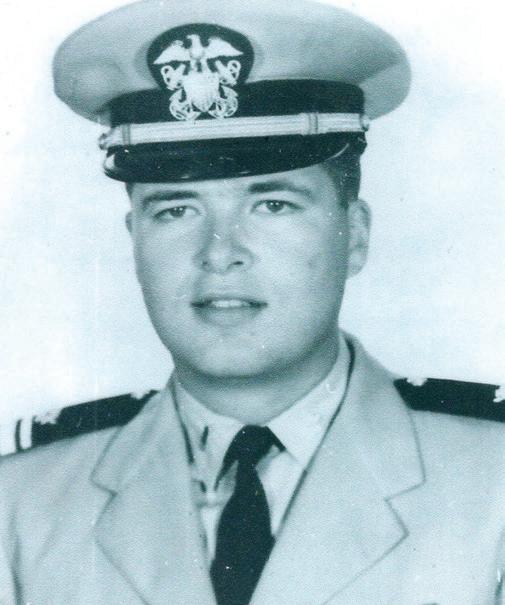

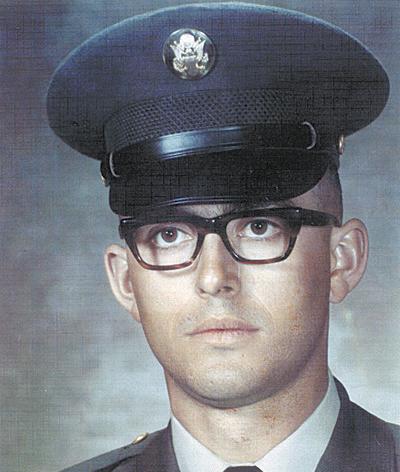
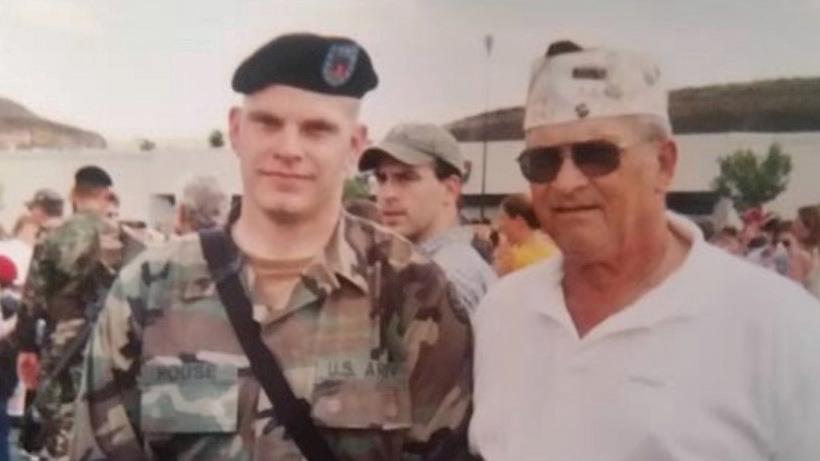









Robert Alan Morton Captain - U.S. Army
Years of Service Panama, Vietnam, Germany
Kenneth L. Alexander
Willard Hubbard
Wesley F. Izenhower
MIcah House Sergeant
Andy Kudromowicz Staff Sergeant - Air Force
Years of Service Korean War
Mark E. Rice Major - Army
Years Of Service Major General James Wright Scholar at College of William and Mary, Williamsburg, VA
Smith
Ray
Tannahill
Jay K. McCann
Hugh W. Tannahill US Army 1943-1945 Philippines
Mark A. Lorenz
AFB, Anderson AFB, Eielson AFB, Hickman AFB, Nellis AFB, Cairo West, Egypt Tom E. Anderson
Squires

2023 Salute A VETERAN











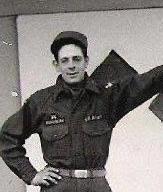




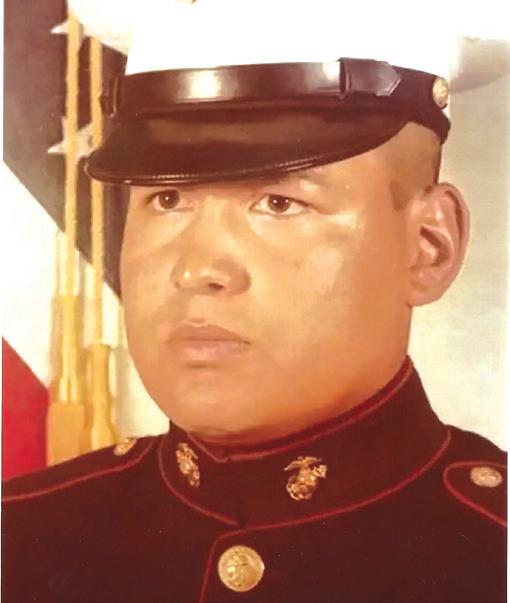














2020 Salute A VETERAN


Phillip Wm. George
Reginald
Thomas Robert Sanford
Connie D. Workman Col - Air Force 20 Years of Service Vietnam (2 Terms) California, Texas, Kansas
Burt Harrison Staff Sergeant - Army 1942-1945
Nick Smith Army WWII
Richard Smith Army Vietnam
Ryan Klamper

2023 Salute A VETERAN




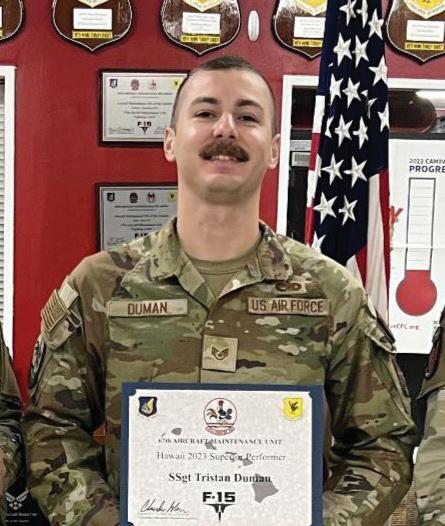







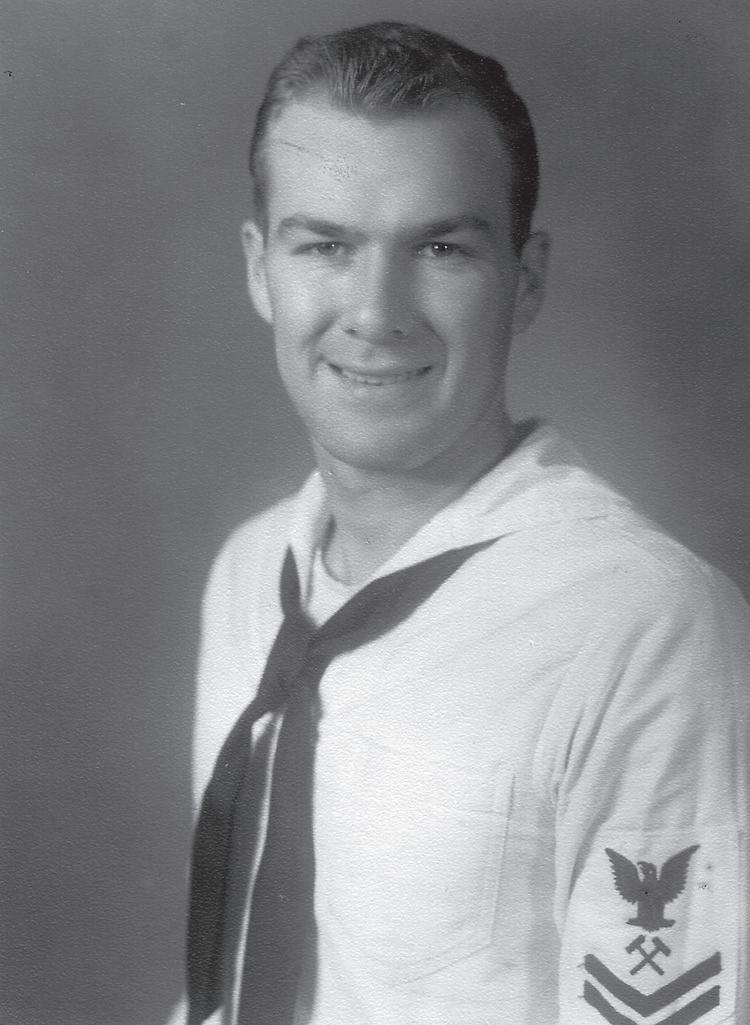


Robert Setlow
Takhli
James Weaver LTC – Army
Dennis R. Paul Gunnery Sergeant-
Richard Tuschhoff
Charles M. Evers Gunnery Sergeant- USMC Retired
Awarded Silver Star for action in Iraq 2006
2023 Salute A VETERAN













Mathew Johnson Lt. Col. - US Army 1997 -2019 Iraq; Afghanistan
Col. Barry Johnson US Army Retired 29 years Macedonia; Cuba; Iraq; Afghanistan Lance Johnson CPO - Navy
- 2000 Lebanon; Japan; Persian Gulf
Richard E. Johnson
Navy
Island; Coast of Vietnam
Floyd M. Johnson Chief -
Pacific - Pearl Harbor Survivor
Douglas E. Welch Captain - US Navy
Years of Service
Diego, CA; Norfold, VA; Pentagon, Camp Lejeuue, VA, Roosevelt Rds, Peurto Rico, Newport RI, JCF Brunssum Netherlands, Peterson AFB Colorado Springs CO.
Ron Hayhurst Sargeant - Army 1967 - 1969 Vietnam
Phil Poulsen Lieutenant US Army Air Defense Artillery, Germany 1963-1965. Captain US Army Reserve 1965-1973.
Ian J. Johnson Senior Airman - United States Air Force 2020-Present Okinawa, Japan, Kadena Air Base, California
EXPLOSIVES EXPERT DISCUSSES MISSION TO RECOVER WWII REMAINS


Marine Corps Staff Sgt. Matthew Sponagle, 30, is a member of a 25-person team from the Defense POW/MIA Accounting Agency searching for the remains of 10 airmen from a B-24H Liberator bomber that crashed in a field in northern Germany in 1945.
Besides helping to identify personal effects and remains of the crew, Sponagle’s other important job is explosive ordnance disposal technician for the team.
When the team first arrived on Aug. 1, Sponagle established liaison with the local police and the German explosive ordnance disposal technicians who would dispose of any bombs or ammunition found.
After graduating from boot camp in September 2011 at Marine Corps Recruit Depot Parris Island, South Carolina, Sponagle spent eight months learning his craft at the Naval School Explosive Ordnance Disposal at Eglin Air Force Base, Florida.
But going to school doesn’t mean you learned everything there is to know, he said. “You learn something new at each site,” he said. For instance, Sponagle had to research the World War II ordnance that the bomber carried to better mitigate any hazards in Germany.
He learned all about the bombs the aircraft was carrying — including information on the bomb fuses, small arms and ammunition, such as the 50-calibre machine gun. Sponagle, a native of Reading, Pennsylvania, said this is his fourth recovery mission. His first recovery mission was on a jungle mountain in Panama, where he helped search for two naval aviators whose plane crashed during a training mission.
The team found some of the airmen’s personal effects and parts of the aircraft; however, they found no remains, so that was pretty frustrating, he said. Sponagle’s next recovery mission was searching for missing airmen who crashed in Thailand in World War II.
We Salute and Honor
All Our Veterans...



A very special thank you to our very own Veterinarian, David Rustebakke, for his service, respect, honor, and gratitude.
Dr. David Rustebakke, his father and nephew, all are very dedicated to the military.
Thank you to all who served, Happy Veteran's Day!



Courtesy DOD News
ARMY STAFF SGT. JOHN MILLER
Marine Staff Sgt. Matthew Sponagle, searches for metal under the earth during the investigation of a possible World War II crash site in Lampang Province, Thailand.
MARINE CORPS SGT. ZACHARY T. BEATTY
Marine Corps Staff Sgt. Matthew Sponagle rappels down a slope during a casualty evacuation drill in Santa Fe National Park, Panama, in hopes of finding missing naval aircrew members lost during a training flight in 1985.



rmy Pfc. Jessica Kwiatkowski made history on Sept. 18, 2023, when she became the first woman infantry soldier to earn the Guard, Tomb of the Unknown Soldier Identification Badge. Other women have earned the badge, but they have come from other career fields. Tomb Guards who earn the badge also earn the distinction of being referred to as Sentinels.

Courtesy DOD News
SMITHSONIAN RESTORES,
The National Air and Space Museum's Steven F. Udvar Hazy Center in Chantilly, Virginia, has had a lot of massive pieces of history on display over the years, including the Space Shuttle Discovery, the Concorde supersonic airliner and the Enola Gay. But now, on the 22nd anniversary of the Sept. 11, 2001, attacks, it's got an important new addition — one of the foam-carrying aircraft rescue vehicles that was crucial to putting the flames out at the Pentagon.
Foam 331, as the truck is known, was stationed at Ronald Reagan Washington National Airport when 9/11 happened. It was the first rescue vehicle to arrive at the Pentagon — aside from Foam 161, the building’s own rescue vehicle, which was heavily damaged in the attack — that was equipped with the necessary tools to contain the flames coming from the collapsed part of the Pentagon.
“The primary purpose for this type of vehicle is suppressing aviation fuel fires,” Roger Connor, the Smithsonian’s curator of aeronautics, said of the specialized truck. “These types of apparatus require foam in addition to a powerful suppressing






Courtesy DOD News
SMITHSONIAN’S NATIONAL AIR AND SPACE MUSEUM
“Foam 331,” a fire rescue truck used at the Pentagon in the aftermath of the Sept. 11, 2001, attacks, was restored and is on display at the National Air and Space Museum’s Steven F. Udvar-Hazy Center, Va.

A CHILDHOOD LOVE OF TECH LED HER TO THE SPACE FORCE



WHEN DID YOU JOIN THE AIR FORCE?
I joined the Air Force after completing my bachelor’s and master’s degrees in electrical and computer engineering from the University of Louisville. I’m a proud [alum] of Air Force Reserve Officer Training Corps (AFROTC) Detachment 295 and commissioned in August of 2009. My family has a strong heritage of military service, and I can trace back at least 150 years of military service on both sides of my family. I grew up watching planes take off and land at Louisville Muhammad Ali International Airport, home to the 123rd Air National Guard Airlift Wing. My father is a retired Marine, so growing up around military bases influenced me to
pursue a career in aeronautics through the military.
WHY DO YOU SERVE?
I serve for those who served for me. I serve for those resting in Arlington and military cemeteries around the world. I serve for those who departed this world in battle. I serve for those who still live to tell their tales of war and sacrifice. I am grateful for the freedoms we have today, because of their sacrifices. I carry that legacy and we truly stand on the shoulders of giants.
HAVE YOU ALWAYS HAD AN INTEREST IN SPACE?
Yes! Technology, engineering, space, SPACE continued on page 23
COURTESY DOD NEWS
Space Force Maj. Amber DeRiggi
COURTESY DOD NEWS
Air Force Capt. Amber DeRiggi, left, poses for a photo with Buzz Aldrin, a retired astronaut, and Air Force Capt. Abigail Sutton, at Space X Headquarters in Hawthorne, Calif.
FIREFIGHTER WHO LOVES CHALLENGES ENLISTS IN THE MARINE CORPS
Courtesy DOD News
When Alisa Mycka's older brother joined the Army, she said she wanted to do as well or better than him, so she joined the Marine Corps after spending about 18 months as a firefighter.
The two have a long-running sibling rivalry and she said she always tries to outcompete him in everything.
Today, Mycka, 22, is a corporal and drives tactical vehicles for the Marine Corps. She’s currently deployed to Queensland, Australia as part of Exercise Talisman Sabre 23.
This year marks the 10th iteration of Talisman Sabre, a biennial exercise designed to advance a free and open Indo-Pacific by strengthening partnerships and interoperability among key allies. The spelling of the name — sabre vs. saber — reflects which country is leading the exercise: Talisman Sabre when Australia leads and Talisman Saber when the U.S. leads.
Thirteen nations from Japan to Germany are participating in this year’s full exercise. Mycka, who hails from Baltimore, Maryland, went to boot camp at Marine Corps
FIREFIGHTER continued on page 22




DAVID VERGUN/DOD Marine Corps Cpl. Alisa Mycka sits in her truck during Talisman Sabre in Queensland, Australia.
Photo Courtesy of the Whitman County Gazette


continued from page 21
Recruit Depot, Parris Island, South Carolina.
Her boot camp platoon was all female. During her time on the island, the recruit depot integrated women with men in the platoons and she said she wished her platoon had been integrated too, as she likes to compete with men.
During her spare time aboard the amphibious transport dock ship USS New Orleans, which transported her from Okinawa to Australia, she said she enjoyed working out in the gym, just like she did on Okinawa.
Besides working out, Mycka loves playing soccer with her favorite position being attacker.
Being a firefighter helped prepare her for the physical training needed in the Marine Corps, where she might one day be in a firefight. She mentioned that she put out a lot of car fires in Baltimore and one memorable one she put out was on a blazing Greyhound bus.
Mycka’s four-year enlistment is coming up soon and she’s struggling with the decision whether to stay in the Marine Corps and make it a career or get out and use her GI Bill to learn a trade like electrician or heating and air conditioning.
However, she didn’t struggle with the decision to join the Marine Corps. She said it was the right call for her.

DAVID VERGUN/DOD
Marine Corps Cpl. Alisa Mycka drives one of these trucks during Talisman Sabre in Queensland, Australia.
continued from page 20
rockets, you name it. I grew up on developing electronics. Everything I built depended on the electromagnetic spectrum for communications and receivers, so space has always been at the forefront of my innovation.
WHY DID YOU TRANSFER INTO THE SPACE FORCE?
I was working at Peterson Space Force Base [in Colorado Springs, Colo.] when we became the U.S. Space Force headquarters, and the question became, ‘Why not?’ I jumped on the opportunity to be a small part of history.
As the Chief of Avionics & Electrical Systems on the Atlas V rocket at Los Angeles Air Force Base, California, our team delivered $13.5 billion in space capabilities to orbit and now I get to see those satellites and space capabilities operating at the National Space Defense Center today.
During my time at Peterson SFB, I was the executive agent to the NSDC, and led a small team that developed the delta construct that ultimately transformed into Space Delta 15. The Space Force organizes, trains, and equips the NSDC and as such, we built Space Delta 15 (DEL 15) to be the core DOD component of the center while the U.S. Space Force evolved and began to take on service functions and responsibilities.
The NSDC is truly one of a kind, with DOD, mission partners and intelligence partnerships unmatched anywhere else. This is the epicenter of space defense operations, and everyone here is a subject matter expert trained and ready for mission execution.
TALK ABOUT THE MISSION OF DEL 15. HOW IS THIS DEL CRITICAL TO THE JOINT
FIGHT?
DEL 15 provides service command and control capability, mission-ready crew forces, skills training, certifications, intelligence, surveillance and reconnaissance and cyber mission defense, communications, and special mission information technology support to the NSDC, develops training environments, testing, and simulation to prepare USSF forces, and designated joint and allied partners, to prevail in a contested, degraded, operationally limited all-domain environment. Joint warfighting relies on space operations and space defense, and DEL 15 is the command-and-control delta supporting the space defense mission, responsible for command-and-control of our joint orbital warfare assets.
WHY DOES SPACE OPERATIONS REQUIRE A JOINT FORCE EFFORT?
While the DOD is [composed] of military branches, the joint force is not truly segregated into services. We are holistically dependent on each other, as peacetime and warfighting both rely on multidomain operations. Each service has responsibilities and systems that are reliant on space capabilities. From intelligence, to fires, to battlespace maneuverability, space capabilities provide the warfighter and all levels of leadership the visualization tools required to fight and win in a contested environment.
TELL ME ABOUT YOUR SUPPORT SYSTEM.
My family is an interwoven group of lovers and philanthropists. My life support is my spouse, Steven, and our six children ranging from five to 18 years old. Military families and children have this incredible ability to adapt to unanticipated change. Therefore, they are robust, resilient and relentless. My support system does not rely on stability in place. As all military families do, we rely on stability within ourselves and each other. There are no words to describe the blessing that is my support system.
WHAT ARE YOUR HOBBIES?
My hobbies include traveling and family adventures, rockets, electronics, hunting, fishing, hiking, building Legos with my children and working on my 1964 Ford Mustang. I’m a car fanatic, from Bugatti Type 57SC Atlantic to the Koenigsegg Gemera. I find hobbies that stimulate and inspire to our children’s creative mindsets, just as my mom did for me. SPACE


1037 21st Street, Lewiston (Across from Alberstons) 208.743.5822 • Hours: Wed.-Sat. 10am-4pm www.vulcanforgeandknife.com


COURTESY DOD NEWS
Amber DeRiggi, center left, poses for a photo with her family at 4th Street Live in Louisville, Ky
TRUCK
continued from page 19
agent … rather than just water.”
If you’re not familiar with an airport fire rescue vehicle — commonly called a “crash” truck by firefighters — it’s much more versatile than a standard fire truck.
“Rather than a conventional local fire station, which has a truck that’s designed to hook hoses up to a fire hydrant or a pumper truck and then have firefighters manually aim the hose at the fire, this truck has all that capability built in,” Connor said. “It carries its own water with it.”
He said the trucks can also shield the crew because they have built-in cannons that can spray water and foam from a distance.
“In the case of 9/11 at the Pentagon, they were not only using the trucks to spray from their own cannon, but they were also using auxiliary, remote cannons that were placed on the ground,” Connor said. “The trucks were also powering those.”
The curator said that, while the trucks are extremely important, they almost never see the action for which they were built.
“Aviation is such a safe form of transportation that there are almost
never any major airline accidents that are reachable by this type of vehicle in the United States anymore,” Connor said. “This vehicle has responded to maybe a couple of small engine fires, or that kind of thing, but it basically spent its life on standby. Sept. 11 was really the only incident in which this vehicle ever fulfilled its intended purpose.”
After 9/11, Foam 331 remained in service at Dulles International Airport until 2016, when the Metro Washington Airports Authority sold it to a Canadian airport support firm for parts. Ultimately, the company sold it back to its original manufacturer, Oshkosh Corporation.
“It was essentially being sent back to be scrapped when it was located and people realized what this vehicle was,” Connor said.
In recent years, the nonprofit Aircraft Rescue and Fire Fighting Working Group began working to recognize the airport firefighter community that helped on 9/11.
The Smithsonian was interested in doing so using the best example of equipment possible — and the work of these rescue vehicles stood out. Thankfully, Foam 331 had just been rediscovered when the project came to fruition.
Connor said the manufacturers of the truck did the bulk of the restoration work


An aircraft rescue vehicle sprays fire-suppressing foam onto flames at the Pentagon that erupted after American Airlines Flight 77 was flown into the building during the attacks of Sept. 11, 2001.
by replacing some missing pieces, including a bumper turret, which is the foam cannon that sits on the bumper. The paint had to be refinished; some supplementary materials, such as the ladder rack that was on the vehicle in 2001, had to be replaced; and reflective striping and identification markings had to be configured back to what they were on 9/11. Connor said they just finished restoring those markings earlier this month.
“When we were putting the decals on the other day, the gentleman that was doing that was a retired firefighter. He was actually one of the on-scene commanders [on 9/11]. He was focused on the collapsed section at the impact site,” Connor said. “So, it was kind of fascinating to have him be the one to put the decals on and be able to point to the picture that we had on display and say, ‘That’s me in the picture.’”
Connor said Foam 331 will resonate with
visitors because it demonstrates the often “out of site, out of mind” roles played by first responders, aircraft grounds crews and support personnel.
“We are really honored to be able to present the vehicle,” the museum curator said. “The ability to tell a more comprehensive 9/11 story is essential for acknowledging and commemorating one of the most traumatic moments in our nation’s history.”
Over the past two decades, the Udvar Hazy Center has displayed several items from 9/11, including fragments of the Pentagon and World Trade Centers. Still on display is the MQ-1 Predator #3034 drone that fired the first missile of Operation Enduring Freedom in Afghanistan on Oct. 8, 2001, in response to the Sept. 11 attacks.
The museum will hold a formal dedication of Foam 331 in 2026 around the 25th anniversary of Sept. 11.

TOMB BADGE
continued from page 18
Kwiatkowski stood at attention next to Spc. Gavin Glover, who also earned his badge, in the chapel of Arlington National Cemetery’s Memorial Amphitheater as 1st Lt. Henry Newstrom, the commander of the Guard, congratulated them on becoming sentinels.
“You are now fully vested members of a small team that the nation trusts to do its most important ceremonial mission,” he told a crowd of about 30 people.
To earn the badge, soldiers must complete five phases of testing and demonstrate a high degree of proficiency in general Army and Tomb Guard knowledge. They also must maintain the meticulous appearance of the uniforms worn by Tomb Guards while on duty; master the various guard changes and ceremonies conducted at the Tomb; and demonstrate verbal and written knowledge of over 12 different poems and 200 Arlington National Cemetery gravesites.
At the ceremony, Kwiatkowski’s and Glover’s fathers pinned the badges on the right breast pockets of their uniforms. Lt. Col. Peter Vangjel, the commander of the 4th Battalion, 3rd Infantry Regiment, known as “The Old Guard,” explained the importance of the Tomb Guards.
“More people come to see the Tomb Guards, more people see them on television, more people walk through here every day than most other Army formations put together,” he said. “They have incredible influence.”
Kwiatkowski, who gained the public’s attention when a video of her guarding the Tomb during a severe thunderstorm went viral, remained humble about her pioneering achievement.
“I’m honestly just another Tomb Guard,” she said. When asked about her life after going viral, she mentioned that Army leaders had given her a lot of support, explaining, “They tell me congratulations and keep doing the mission.”
Glover appreciates the rarity of his badge. “Both my parents, who are retired Army officers, have never met somebody with one,” he explained. The hardest part of earning his badge, he said, was the upkeep of his various uniforms.

Both the new sentinels’ parents were proud of their achievement.
Kwiatkowski’s mother, Lynne, brought tissues for the emotional event. “When she does something, she does it 110 percent,” she said. “That’s always been her since she came into this world.” When asked about his daughter guarding the Tomb in the storm, Kwiatkowski’s father, Jason, explained, “That’s just how she is; she’s always tried to attack the hardest thing possible.”
Glover’s father Jim, a retired Army major, beamed with pride at his son’s achievement. “It’s been amazing watching his progress through the testing process and reaching these standards,” he said. “I know it’s going to serve him well in the Army.”
Among the crowd of soldiers and Arlington National Cemetery employees was an older gentleman. Joey Spangler had been a Tomb Guard almost 45 years ago and came to the ceremony to see history. “It’s a proud moment,” he said. “Nothing compares to serving the Unknowns. It’s something you’ll keep with you for your whole life.”


8am-6pm • Sun 9am-6pm
ELIZABETH FRASER, ARMY Army Pfc. Jessica Kwiatkowski, left, and Spc. Gavin Glover, center, earn the Guard, Tomb of the Unknown Soldier Identification Badge during a ceremony at Arlington National Cemetery, Va.
Sponagle said his third recovery mission was special because they were searching for remains of Marines who fought on Guadalcanal in the Solomon Islands during World War II.
As for future plans, Sponagle said he plans to stay in the Marine Corps and then work overseas on humanitarian assignments with a nongovernmental organization.
EXPLOSIVES
continued from page17

Sponagle said he volunteered for the recovery missions because he wanted to give back to the families whose loved ones paid the ultimate sacrifice.
The agency, which is part of the Defense Department, searches in 45 countries for missing service members from World War II and later conflicts, including the Korean
War, Vietnam War and Desert Storm. Some 81,000 are still missing.
Once remains are recovered and the agency’s laboratory determines the person’s identity through DNA analysis and other means, the service member’s family is notified and arrangements are made for a military funeral.



SUCCESS
continued from page 8

“His teachings stick with me every day as a soldier.
His father’s teachings about family values are important parts of Estrada’s heritage and life. That extends to the family he’s gained while living on Fort Sam Houston in Texas.
“They’ve opened my eyes to new experiences,” Estrada said, smiling from ear to ear. “Here, it’s a second family.”
It’s been 10 years since Estrada’s father passed. Despite the years, the memory of him and the life lessons he shared have never faded, Estrada said.
“It brings me joy that I am doing something that he would be proud of,” said Estrada. Estrada continues to honor his father every year during Dia De Los Muertos, or Day of the Dead. The Mexican festivity honors death, the afterlife, and life itself, as families welcome back the souls of their departed family members to meet again.
Estrada Sr. loved spicy food, so Estrada makes it his mission every year to prepare his father’s favorite dishes and try to match his own tolerance for spiciness.
“The reason why I love the holiday is because we all come to celebrate them even though they aren’t around anymore,” Estrada said. “We get to do the things they loved to do but can’t do anymore.”
Estrada described his father as selfless and the family’s provider. Estrada Sr.’s strong work ethic and uncompromising dedication to the family was his daily gift to his kid.
“Motivation was never lacking. He inspired me to work hard because he made it easier on us,” Estrada said. “I want to show him that his life wasn’t in vain.”





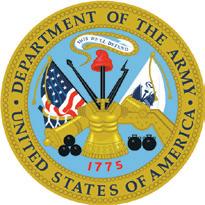

COURTESY ESTRADA FAMILY
Army Spc. Armando Estrada, center, poses for a photo with his brothers and his child.
MARINE CORPS SGT. JACK A. E. RIGSBY Marine Staff Sgt. Matthew Sponagle and Air Force Master Sgt. Kevin Christensen conduct digging operations during a recovery mission to find a U.S. aircraft crew lost during World War II in northern Germany.
MARINE
COLLEGE TO CORPS
Kiffs graduated from the University of Nevada, Reno in December 2021, allowing him to shift focus to what would be the biggest undertaking of his young adult life: becoming a United States Marine. He arrived at Marine Corps Recruit Depot San Diego two weeks after college graduation to begin recruit training.
Following 13 weeks of trial and triumph during entry-level training, Kiffs graduated recruit training as his platoon’s guide. The distinction as platoon guide is given to the top recruit in each platoon. Kiffs felt immense pride for having earned the title Marine, compounded with his mom and friends attending his recruit training graduation. He successfully completed his follow-on Marine Combat Training at Camp Geiger, North Carolina, and reported to the Naval School of Music, Joint Expeditionary Base Little Creek-Fort Story, Virginia, to become a Marine Corps musician. There, one of the instructors introduced him to Marine Corps commissioning programs and the idea of pursuing a commission as an officer.
Kiffs was assigned to the 2nd Marine Aircraft Wing Band at Marine Corps Air Station Cherry Point, North Carolina, after successfully earning the military occupational specialty 5524, musician, from the Naval School of Music. Although he enjoyed being a musician, he aspired to make a more significant impact on Marines. With encouragement from Weaver, he pursued the Enlisted Commissioning Program. Kiffs received the news of his acceptance into the program during a temporary additional duty with the 2nd MAW Band. He was elated but also understood that becoming an officer required the completion of Officer Candidates School.
COMMISSION AMBITION
Kiffs found OCS to be less of a culture shock, having already been through enlisted recruit training, but it was challenging, nonetheless. Kiffs went to OCS as a lance corporal, making him among the most junior candidates with prior-enlisted experience in his company. Approximately halfway through OCS, he learned he met the requirements to be promoted to corporal; however, his promotion would have to wait until after OCS graduation. Kiffs graduated OCS after 10 intense weeks. He officially completed all the requirements to be commissioned as a Marine Corps officer.
He returned to MCAS Cherry Point following OCS graduation Aug. 5, 2023. Upon his return, the commanding officer of Marine Wing Headquarters Squadron 2 held a promotion and commissioning ceremony for then-Lance Cpl. Kiffs. Because he had met the requirements to be promoted to the rank of corporal during OCS, Kiffs was first promoted to corporal, marking a significant milestone in his enlisted career. However, with his new blood stripes draped over his shoulders and corporal chevrons on his collar, Kiffs’ time as a noncommissioned officer would be short lived as he immediately and subsequently pinned on the rank of second lieutenant having also met all commissioning requirements.
His promotion and commissioning ceremony ended symbolically with the 2nd MAW Band playing the “Marines’ Hymn,” marking the conclusion of his time as a Marine Corps musician and the beginning of his journey as a Marine Corps officer.
When asked why he wanted to commission as an officer, Kiffs’ answer could not be clearer: “To help Marines; to give back. Officers are uniquely positioned to influence Marines’ lives for the better.”
Kiffs’ journey, from his origins in Ghana to his pursuit of excellence in music, education, and service in the Marine Corps, reflects

perseverance, a commitment to seize every opportunity, and a continual quest for improvement.
Kiffs offers this advice to young Marines aspiring to take on greater challenges:
“Your career is in your hands. The effort you put into something in the Marine Corps determines what you get back. If you have a goal, go for it, and if you work hard, you will eventually achieve it.”
Honoring Dana Lohrey PN2 and Lester Spears, Petty Officer 2, Navy.



COURTESY 2ND MARINE AIRCRAFT WING BAND FACEBOOK
Marine Corps Lance Cpl. Robert Kiffs plays clarinet.
BUGLER
continued from page 5
through my wool uniform and high collar,” he said. The pain was most intense on his feet. “Those black shoes make it feel like your feet are cooking.”
Byrne tries to ignore the people around him while he plays, but he has noticed people’s reactions when he’s finished. “I’ve caught tough-looking biker dudes breaking down at the Tomb of the Unknown Soldier,” he said. “It’s a moving experience for a lot of people, especially if it’s their first time at the cemetery.”
Byrne tries not to let cameras or crowds distract him. Instead, he focuses the on the person being honored. Some of the hardest funeral services, he explains, are the ones with low attendance. “That struck me,” he said recalling a funeral attended by only a chaplain and an Arlington Lady. “It was difficult sounding ‘taps’ because it was too personal.”
The absolute hardest funeral services for Byrne, of course, are those for his fellow soldiers. “Those hit closer to home,” he explained, because of the emotional connections he experiences while sounding “taps.” “It’s odd to sit next to a person at work one day and they’re not there the next.”
In early 2021, the Army Band made Byrne its official Special Bugler. His first assignment was President Joseph Biden’s inaugural wreath laying at the Tomb of the Unknown Soldier. In attendance were the Bush, Obama and Clinton families. For Byrne, it was a true

trial by fire. “There were a whole handful of people that I didn’t look at,” he remembered. When it was over, he received hundreds of texts and emails from worldwide admirers. “I received nice comments from the ‘who’s who’ of the trumpet world,” he said. “It was mindnumbing how many people viewed my performance.”
Byrne also enjoyed sounding “taps” when South Korean President Yoon Suk Yeol joined Biden in laying a wreath at the Korean War Veterans Memorial on April 25,


2023. The event was private, with no media or audience. Only the presidents and their spouses attended. “Opportunities like that are special and unique,” he said. “I have a front seat to history as it happens.”
Byrne loves what he does. “I can’t think of any other career that could be so emotionally and professionally satisfying,” he said. He enjoys his job so much that his car’s license plates read “24 Notes.” “It’s such a big part of what I do,” he explained. “Those who know, know.”




ELIZABETH FRASER, ARLINGTON NATIONAL CEMETERY
A bugler from the Army Band, “Pershing’s Own” plays “Taps” in honor of the late Gen. (ret.) Colin Powell during a special military funeral in Section 60 of Arlington National Cemetery, Arlington, Va.
WOMEN
continued from page 4
Evans was a captain in the Army Nurse Corps during the Vietnam era and served in the country as a nurse at two hospitals from 1968 to 1969. She said she and many other women saw a lot of trauma, and they did their best to save lives.
An estimated 10,000 women served in Vietnam, while more than 265,000 military and civilian women served around the world during that era. While 90% of the women who served in Vietnam were nurses, many were also in administrative roles, military intelligence or air traffic control. The eight women listed on the Wall were military nurses, but dozens more women died during the war working as civilian war correspondents, photojournalists, humanitarian aids and more.
When Evans and the other women returned home, much like thousands of male service members of that era, they didn’t receive a warm welcome.
“I believe in protesting war if we don’t support it, but they didn’t separate the war from the warrior, and we were feeling the brunt of it,” she said. “For so many of us, our way of surviving our homecoming was to just not talk about [the war].”
However, about a year after the Wall’s dedication, Evans saw a photo of the statue that would be added to the memorial depicting three servicemen. And that’s when something just clicked.
“If they’re going to have a statue to the men, there has to be one to the women, or they’ll never know we were there,” Evans remembered saying to her husband.
So, she began what turned into a 10year quest to get a memorial built for female Vietnam veterans. (To put this effort into perspective, the larger memorial, the Wall, took three years.)
After years of planning and finding allies to support the cause, Congress approved a site on the National Mall for it in 1988, but the initial design was rejected by the D.C. Commission of Fine Arts, Evans said. So, they held a national open-design competition that received 350 submissions. The design by Glenna Goodacre, a New Mexican sculptor, came out on top. She created the bronze statue that’s now in place depicting three women and a wounded soldier.
“The nurse tending to the wounded soldier directly faces the apex. The standing woman … is facing the [Abraham] Lincoln [Memorial], and
the kneeling woman is facing towards the Washington Monument,” Evans explained. “The eight trees that surround this monument represent the eight women whose names are on the Wall.”
She said while the statue depicts nurses, it’s a memorial to honor all women who served.
“There is no rank on the figures. there is no insignia identifying any of them,” Evans said. “We embrace the 265,000 women who served around the world.”
Once it was built, Evans said letters of thanks from servicewomen of the era began to pour in.
“They were just so thankful for the Vietnam Women’s Memorial because it was the starting point for their healing,” she said. “Once they started sharing their stories, the public was incredulous. They had no idea that that’s what we had seen, that’s what we had done. … And so, the appreciation and the gratitude from the public for these women has all been part of that healing process.”
Over the years, more and more women have opened up to tell their stories publicly. For this year’s Veterans Day commemoration on the National Mall, Evans said that, for once, it wasn’t hard to find women willing to participate.
“They’re just coming out of the woodwork. It’s wonderful. I’m hearing from so many of them that they’re coming in,” she said. For those who can’t attend in person, the event will be a livestreamed at https://www.vvmf.org/live/
Evans said that, in the past 30 years, female veterans have contributed greatly to America and should be celebrated.
“Some of them went on to become colonels and generals and stayed in the military. Others came out and … changed occupations. They furthered their degrees, and they’ve been contributing to research that’s being done on PTSD and Agent Orange. They’ve fought for legislation for gender-inclusive benefits at VA facilities which were not friendly to women veterans when we came home in the 60s and 70s,” Evans said. “We proved ourselves, and we opened doors for the next generations. Now, the sky’s the limit.”
Evans said she and other female vets will continue to share their legacy “every day until we’re all gone.”
“I want to say how proud I was of the women I served with, and how much we cared for these young men who served during that era,” she continued. “I’m so grateful to all those wounded soldiers

in particular who came to stand by our side and support us to help us get that memorial built. … They were so appreciative and so grateful.”
To learn more about the special events honoring servicewomen this Veterans Day weekend, visit the Vietnam Women’s Memorial website.

VIETNAM WOMEN’S MEMORIAL FOUNDATION/EASTERN NATIONAL
A reflection on the Vietnam Veterans Memorial shows women veterans attending the dedication of the Vietnam Women’s Memorial, as a female veteran touches the name on the Wall of Army Lt. Sharon Lane, who died in Vietnam during the conflict.







SLURP
continued from page 3
Notably, it was the only death sustained by his group.
“The enemy was always close to us,” James said. “We were lucky that nobody got hit except our commanding officer.”
James said that area was in the middle of Viet Cong territory and there were lots of firefights. He wanted to be in the area that had the most action. However, he was transferred after six months, which was the maximum he was allowed to stay in that area.
James next went to Vinh Gia near the Seven Mountains where the Viet Cong operated out of caves, which James said American troops could never empty because they were camouflaged inside.
The Green Berets also had an outpost at Giang Thanh.
“It was right on the Cambodian border. We could throw a rock across the canal and it would hit on Cambodia,” he said.
There were only two Americans at the outpost and a hundred Vietnamese; James knew if they wanted to overrun the outpost, they could do it. The Air Force couldn’t fly to the area because they couldn’t fly over the Cambodian air space, which meant they didn’t have air support and the Viet Cong knew it.
“So being with one other American and being bored stiff most of the time, that’s why I hated going to that outpost,” he said.
When the camp was closed and handed over to the Vietnamese, he was transferred to work as a radio operator. It was another job he didn’t like because it was so boring working in a basement, sending and receiving messages all day.
“The only action I ever got was upstairs in the bar,” James said with a laugh.
James requested another transfer for his last month in Vietnam and worked as a motor gunner at an outpost at the base of the Seven Mountains. The area got fired on a lot and James decided that he should put rounds
in, figure out the charges and write it all down so if they were attacked, he would be ready and know the distances to hit and the type of charge.
James’ prediction turned out to be correct when the area was hit one day.
“So I went out there and put round after round in there and they told me, ‘On target,’” James said. “They said later that because of those rounds, the enemy had retreated. So I knew that I had stopped that.”
James served many positions in Vietnam at his different camps, including demolition, radio operations, was trained as an intelligence sergeant and typed out reports because he was a good typist.
“So I knew everything that happened in that camp because I was typing all that information out,” James said.
While he was already serving, his mother got a surprise when she received his draft notice back in the U.S. His mother wrote back saying that her son was a staff sergeant in Vietnam and she would love to have him return and show up for the physical.
“She never got a reply,” he said.
His mom also saved letters James wrote during his training, as well as saving photographs. The details of his letters and his reports in the service helped when he decided to write four books about his experiences titled, “Slurp Sends! On Becoming a Green Beret Book 1”; “Slurp Sends! Experiences of an A-Team Green Beret Book 2”; “Slurp Sends! Experiences of a Green Beret Vietnam Veteran Book 3”; and “Slurp Sends! A Green Beret’s Vietnam Experiences Book 4.”
The title comes from the nickname he received at his first camp in Vietnam. The camp only received enough food for 12 men and only those who finished their first helping could get a second. James always finished his food and got seconds, and one of the other men said, “It’s no wonder — you don’t eat your meals, you slurp them down.”
So James earned the nickname “Slurp.” Later, when he was a radio operator, he finished his messages with
“Slurp sends.” When he couldn’t think of a name for his book someone told him, “it’s gotta be Slurp sends.”
After his time in the service, James wanted to be a commercial pilot and flew for a while until blood clots in his legs prevented him. He also had a blood clot in his eye 12 years ago and wears an eye patch because light can be distracting.
James worked as a mail carrier for the U.S. Postal Service in the San Jose, Calif., area, retiring in 1987.
He met his wife, Linda, at his favorite bar after he went to his ex-fiance’s wedding. He was wearing a three-piece outfit and saw his future wife sitting alone in the bar. They began talking, then he took her to a dance and they were dancing to a romantic song, and James sang along in her ear.
“So that began our romance,” he said.
In 1991, James and his wife moved to Clarkston from the Sierra Nevada Mountains in California. They came to Clarkston to be closer to family, including a stepson, two sons and grandchildren. James’ wife, Linda James, of 40-plus years died in April.
In remembering his time as a Green Beret, James said he’s had a positive attitude about his time in the service. He stayed in touch with a few of the men he served with, but most of them have died.
His books have resonated not only with those who served at the same time he did, but also those who served after. He’ll get messages from people who remember when they went through training and it brought back memories they had forgotten. In sharing his stories, James wants them to serve as a reminder of what it was like in that moment in history.
Brewster may be contacted at kbrewster@lmtribune.com or at (208) 848-2297.
JORDAN OPP/FOR SALUTE
Copies of Green Beret veteran Dick James’ book series titled ‘Slurp Sends!’ are pictured outside his home on Nov. 2 in Clarkston Heights.
JORDAN OPP/FOR SALUTE
Green Beret veteran Dick James poses for a photo while holding the first of his four books from the series ‘Slurp Sends!’ outside his Clarkston Heights home on Nov. 2.

